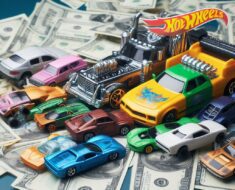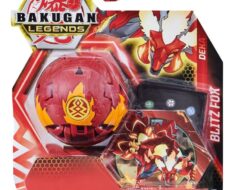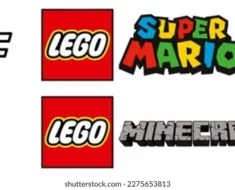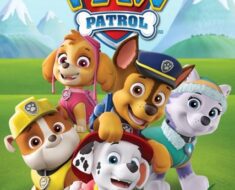Fisher-Price is one of the most iconic and beloved toy brands in the world, with a history that spans over 90 years and a mission to support today’s families with young children through a breadth of products that make early childhood more fun and enriching. The company is constantly looking for new ways to inspire learning and play among children of all ages, abilities and backgrounds. In this article, we will explore the history, current and future of Fisher-Price, as well as some of its most iconic entertainment moments and business story.
History
Fisher-Price was founded in East Aurora, New York, in 1930, by Herman G. Fisher, Irving L. Price, and Helen M. Schelle. While Price and Schelle had worked in retail businesses that featured toys among their inventory, Fisher brought to the group his experience in the advertising and sale of games. All three proved adept at knowing what children liked and were committed to the idea that the public would appreciate high quality toys.
The company’s first catalog stated its fundamental toy-making principles: “intrinsic play value, ingenuity, strong construction, good value for the money and action.” Specifically, they observed, “children love best the gay, cheerful, friendly toys with amusing action, toys that do something new and surprising and funny!” Such beliefs proved correct, as the company’s 16 wooden toys that debuted at the American International Toy Fair in New York City in 1931 quickly became a success. The first Fisher-Price toy ever sold was “Dr. Doodle in 1931.
In the early 1950s, Fisher-Price identified plastic as a material that could help the company incorporate longer-lasting decorations and brighter colors into its toys. “Buzzy Bee” was the first Fisher-Price toy to make use of plastic. By the end of the 1950s, Fisher-Price manufactured 39 toys incorporating plastics. During the 1960s, the Play Family (later known as Little People) product line was introduced and soon overtook the popularity of earlier toys. The ‘Family House’ was one of the more popular Little People playsets.
Herman Fisher retired at the age of 71 in 1969 and The Quaker Oats Company bought Fisher-Price the same year. Under Quaker Oats’ ownership, Fisher-Price expanded its product line to include outdoor play equipment, ride-on toys, musical instruments, furniture, and educational products. The company also began promoting its products through television ads in 1976. In 1982, Fisher-Price created an audiovisual toy division that produced electronic games, video cameras, and cassette players for children.

In 1991, Fisher-Price became an independent company again and traded on the New York Stock Exchange. However, two years later, it was acquired by Mattel Inc., the world’s largest toy company. Under Mattel’s ownership, Fisher-Price consolidated with other divisions of its parent to make up a single, massive marketer of toys principally for children under the age of five. Some of its best-known products include Little People playsets and Power Wheels ride-on toys. It also markets several licensed toy lines, such as Sesame Street products and Disney, Winnie the Pooh, Blue’s Clues, and Bear in the Big Blue House toys and games.
Current
Fisher-Price is still headquartered in East Aurora, New York, but has expanded its presence to over 150 countries around the world. The company has a diverse portfolio of products that cater to different stages of child development, from newborns to preschoolers. Some of its current brands and products are:
- Bright Beats: A line of interactive animal toys that communicate with each other and teach colors, shapes, numbers and music.
- EZ Play Railway: A line of easy-to-assemble train sets that feature lights, sounds and motorized action.
- Imaginext: A line of action figures and playsets that stimulate imaginative play with themes such as dinosaurs, superheroes and pirates.
- Laugh & Learn: A line of educational toys that introduce children to letters, numbers, shapes and more with songs, phrases and games.
- Little People: A line of collectible figures and playsets that depict everyday scenarios such as farm life, school life and city life.
- Loving Family: A line of dollhouses and accessories that encourage role-playing and storytelling.
- Mega Bloks: A line of building blocks that foster creativity and fine motor skills.
- Power Wheels: A line of battery-operated vehicles that allow children to drive their own cars, trucks or motorcycles.
- Thomas & Friends: A line of toys based on the popular TV series that features the adventures of Thomas the Tank Engine and his friends.
Fisher-Price is also committed to social responsibility and sustainability, with initiatives such as:
- Toy Recycling Program (2018), a partnership with TerraCycle that allows consumers to send their old or broken Fisher-Price toys to be recycled for free. The program aims to divert plastic waste from landfills and oceans, and to create new products from recycled materials.
- Mattel PlayBack (2021), an expansion of the Toy Recycling Program that includes other Mattel brands such as Barbie, Matchbox, and MEGA. The program supports Mattel’s goal of using 100% recycled, recyclable, or bio-based plastic materials in its products and packaging by 2030. The program also offers families a guilt-free solution for toys that have reached the end of their useful life, by converting them from waste to energy or repurposing them into other applications.
- Fisher-Price 2030 Vision (2021), a strategic plan that outlines the brand’s vision for the next decade, focusing on four pillars: play, people, planet, and product. The plan includes initiatives such as launching more products that are made from recycled or plant-based materials, reducing plastic packaging by 25%, investing in renewable energy sources, and supporting diversity and inclusion in its workforce and content.
Future
Fisher-Price is always looking ahead to the future, anticipating the needs and preferences of its customers and adapting to the changing trends and technologies. Some of the future plans and products that Fisher-Price has launched or announced include:
- Imaginext DC Super Friends Bat-Tech Batcave (2021), a playset that features Batman’s headquarters with lights, sounds, projectiles and voice activation.
- Laugh & Learn Grow-the-Fun Garden to Kitchen (2021), a two-sided playset that teaches children about gardening, cooking and healthy eating
- Little People Collector (2020), a line of collectible figures that pay tribute to iconic characters from pop culture, such as Teenage Mutant Ninja Turtles, Lord of the Rings and The Office.
- Code ‘n Learn Kinderbot (2019), a robot toy that introduces children to coding concepts through fun challenges and games.
- Linkimals (2019), a line of interactive animal toys that communicate with each other and teach colors, shapes, numbers and music.
Fisher-Price is also exploring new ways to engage with its customers and fans, such as:
- Fisher-Price Toy Museum (2020), a virtual museum that showcases the history and legacy of Fisher-Price toys through interactive exhibits and curated collections.
- Fisher-Price Play Lab (2018), a research facility that invites parents and children to test new products and provide feedback before they hit the market.
- Fisher-Price Nanny Service (2017), a service that offers parents a free nanny for one night while they enjoy a date night or some personal time.
Iconic Entertainment Moments
Fisher-Price has been a part of many memorable moments in entertainment history, both on-screen and off-screen. Some of these moments are:
- In 1973, Fisher-Price introduced the View-Master, a device that allows users to view 3D images on circular reels. The View-Master became a popular toy for children and adults alike, featuring scenes from movies, TV shows, cartoons, nature and more. The View-Master was also used by filmmakers such as Steven Spielberg and George Lucas as a tool for previsualization.
- In 1984, Fisher-Price launched the PXL-2000, a camcorder that records video on audio cassettes. The PXL-2000 was marketed as a toy for children, but it also attracted the attention of filmmakers who appreciated its low-fi aesthetic and experimental potential. The PXL-2000 was used to create several independent films, such as Pixelvision (1988) by Sadie Benning and The Living End (1992) by Gregg Araki.
- In 1995, Fisher-Price released the Talkboy, a voice recorder that can alter the pitch and speed of recorded sounds. The Talkboy was originally created as a prop for the movie Home Alone 2: Lost in New York (1992), where it was used by Kevin McCallister (Macaulay Culkin) to prank hotel staff and escape from criminals. The Talkboy became so popular after the movie that Fisher-Price decided to produce it as a real product.
- In 2006, Fisher-Price partnered with American Idol to create the I Can Play Guitar, a guitar-shaped video game controller that teaches children how to play songs by famous artists. The I Can Play Guitar was featured on the show American Idol season 5 finale, where Taylor Hicks performed “Do I Make You Proud” with the I Can Play Guitar.
- In 2010, Fisher-Price collaborated with Microsoft to create the Smart Cycle, a stationary bike that connects to the Xbox 360 and Kinect. The Smart Cycle allows children to pedal and steer through various games and activities that teach them math, science, and literacy skills. The Smart Cycle was featured on the Ellen DeGeneres Show, where Ellen and her guest Steve Carell tried it out.
- In 2016, Fisher-Price released the Think & Learn Code-a-Pillar, a caterpillar-shaped toy that teaches children the basics of coding and problem-solving. The Code-a-Pillar consists of several segments that can be connected in different ways to create different paths and actions. The Code-a-Pillar was named one of the best inventions of 2016 by Time magazine.
Business Story
Fisher-Price is not only a toy company, but also a business success story. The company has achieved remarkable growth and profitability over the years, thanks to its innovation, quality, and customer loyalty. Some of the highlights of its business story are:
- In 1931, Fisher-Price sold its first toy, Dr. Doodle, for $2.50. By 1934, the company had sold over one million toys.
- In 1955, Fisher-Price introduced its first TV commercial, featuring its popular Corn Popper toy. By 1960, the company had sold over 10 million Corn Poppers.
- In 1970, Fisher-Price launched its first preschool line, featuring toys such as the School Days Desk and the Music Box Teaching Clock. By 1974, the company had sold over 25 million preschool toys.
- In 1987, Fisher-Price acquired the rights to produce Sesame Street toys from Hasbro. By 1990, the company had sold over 50 million Sesame Street toys.
- In 1993, Fisher-Price became a subsidiary of Mattel Inc., the world’s largest toy company. By 1997, the company had reached $1 billion in annual sales.
- In 2001, Fisher-Price launched its first website, fisher-price.com. By 2005, the website had over 100 million visits per year.
- In 2010, Fisher-Price celebrated its 80th anniversary with a special edition of its classic toys. By 2013, the company had sold over two billion toys worldwide.
Fisher-Price is a toy brand that has been making children happy for generations. The company has a rich history of innovation and fun that continues to this day. Fisher-Price is also a responsible and sustainable business that cares about its people and the planet. Fisher-Price is more than just a toy company; it is a story of play, learning and joy.







